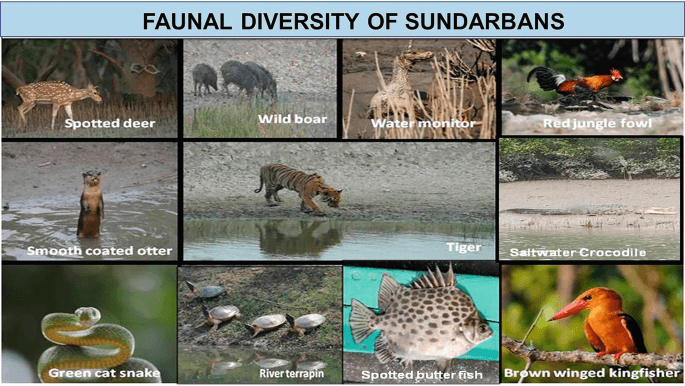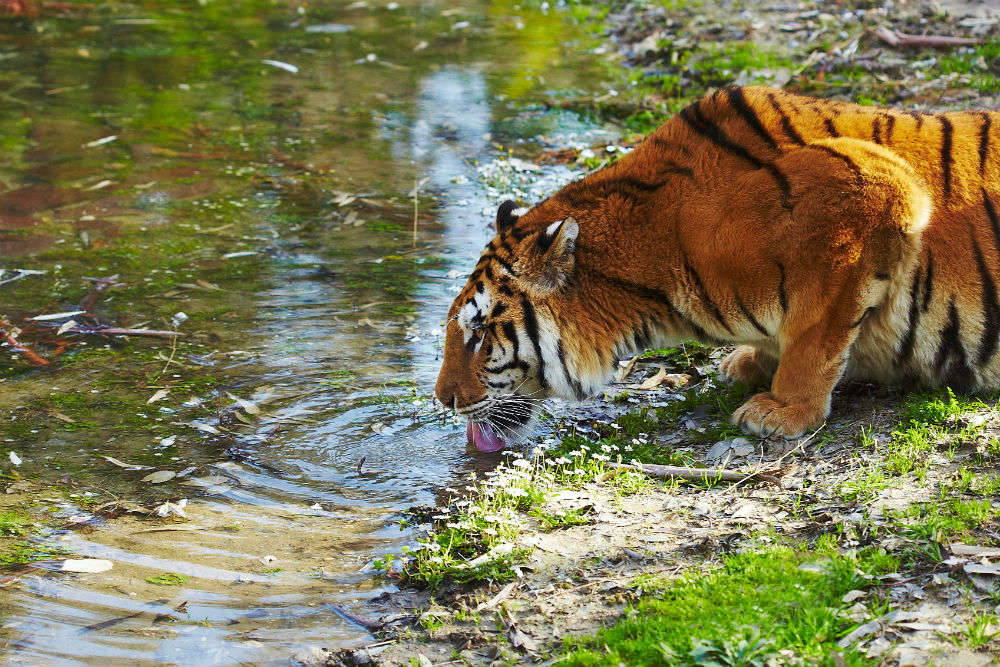- 1 Day Sundarban Tour
Pricing:
- ₹2799 per adult
- ₹1399 for children aged 4-8 years
- Free for children aged 1-4 years (under 48 months)
Facilities Included:
- Welcome Drink:
- Transportation: [Pick + Drop]
- Breakfast:
- Boat Safari:
- Lunch:
- Sightseeing:
- Guide Assistance:
- Snacks and Tea:
- Safety Measures:
- 1 Night 2 Days Sundarban Tour
Pricing:
- ₹4500 per adult (Non-AC room)
- ₹5000 per adult (AC room)
- ₹2250 for children aged 4-8 years
- Free for children aged 1-4 years (under 48 months)
Facilities Included:
- Welcome Drink
- Meals: All Times
- Boat Safari
- Accommodation: AC/ Non Ac
- Cultural Program:
- Visit Watchtowers and Local Attractions
- Safety
- Guided Tour
- Tea/Coffee Breaks
- 2 Night 3 Days Sundarban Tour
Pricing:
- ₹5500 per adult (Non-AC room)
- ₹6500 per adult (AC room)
- ₹2750 for children aged 4-8 years
- Free for children aged 1-4 years (under 48 months)
Facilities Included:
- Welcome Drink
- Meals: (breakfast, lunch, evening snacks, and dinner)
- Extended Boat Safaris: Multiple guided boat safaris
- Accommodation: in AC or non-AC rooms,
- Cultural Program:
- Visits to Key Attractions:
- Expert Guide:
- Tea/Coffee Breaks:

Sundarban 3 Days 2 Nights Package
Immerse in the wild beauty of Sundarbans with our 3 Days, 2 Nights adventure!

Book Sundarban 3 Days 2 Nights
Immerse in the wild beauty of Sundarbans with our 3 Days, 2 Nights adventure!
- 2 Night 3 Days Sundarban Boat Tour
Pricing:
- ₹5500 per adult (Non-AC room)
- ₹6500 per adult (AC room)
- ₹2750 for children aged 4-8 years
- Free for children aged 1-4 years (under 48 months)
Facilities Included:
- All Meals:
- Guided Boat Safaris:
- 2-Night Accommodation: Stay on the boat in comfortable AC or non-AC rooms.
- Cultural Performances:
- Attractions:
- Safety & Security:

Boat Sundarban 3 Days 2 Nights Package
Sail into the wild with our 3 Days, 2 Nights Sundarban Boat Adventure!

Sundarban 3 Days 2 Nights Package
Explore the untamed beauty of Sundarbans with a thrilling 3 Days, 2 Nights boat tour!
Rare and Endangered Species of the Sundarbans

Endangered Species of the Sundarbans: The Sundarbans, a UNESCO World Heritage Site, is home to some of the world’s most unique and endangered wildlife. This expansive mangrove forest, spread across India and Bangladesh, supports a rich biodiversity, with species uniquely adapted to its challenging environment of brackish water and tidal fluctuations. Unfortunately, many of these species face the threat of extinction due to habitat loss, poaching, and the effects of climate change. In this blog, we explore some of the rare and endangered species that call the Sundarbans their home and discuss the challenges they face. Let’s dive deeper into Endangered Species of the Sundarbans.

Rare and Endangered Species of the Sundarbans Important Points
1. The Royal Bengal Tiger (Panthera tigris tigris)
The Royal Bengal Tiger is not only the apex predator of the Sundarbans but also the most iconic species associated with this region. These tigers are unique in that they have adapted to the mangrove ecosystem, developing strong swimming abilities to navigate the numerous rivers and creeks. The Sundarbans is one of the last strongholds for this majestic creature, with an estimated population of around 100-150 tigers in the Indian part of the forest. Also, you can Book the Sundarban Tour At Royal Sundarban Tourism and Sundarban Leisure Tourism Powered By Argusdna. We can explore further details Endangered Species of the Sundarbans.
Despite the tigers’ resilience, they remain endangered due to poaching, habitat destruction, and human-wildlife conflict. Rising sea levels and increased salinity in the region, driven by climate change, further threaten their survival. Conservation efforts are focused on protecting their habitat, mitigating human-tiger conflicts, and monitoring their populations. We can go into more detail on Endangered Species of the Sundarbans.

2. The Irrawaddy Dolphin (Orcaella brevirostris)
The Irrawaddy Dolphin is a rare species of dolphin that inhabits the brackish waters of the Sundarbans. Known for its rounded forehead and lack of a prominent beak, this dolphin is often spotted in the estuaries and creeks of the region. It is listed as vulnerable by the IUCN due to habitat degradation, pollution, and accidental entanglement in fishing nets.
These dolphins rely heavily on the health of the Sundarbans’ aquatic ecosystem. With increasing pollution and habitat fragmentation, their survival is under constant threat. Conservation efforts aim to reduce bycatch, improve water quality, and maintain the delicate balance of the region’s aquatic systems. Let’s talk more about Endangered Species of the Sundarbans.
3. Fishing Cat (Prionailurus viverrinus)
The Fishing Cat is a medium-sized wild cat, known for its excellent fishing skills. Unlike most cats, the Fishing Cat is a proficient swimmer and thrives in the wetland ecosystems of the Sundarbans, where it preys on fish, crabs, and other aquatic creatures. However, the species is listed as endangered due to habitat destruction, primarily driven by the conversion of wetlands into agricultural land and human settlements.

The Fishing Cat’s survival is closely linked to the health of the Sundarbans’ waterways. Conservation initiatives focus on protecting the wetlands, reducing human encroachment, and raising awareness about this elusive and rare feline.
4. Estuarine Crocodile (Crocodylus porosus)
The Estuarine Crocodile, also known as the Saltwater Crocodile, is one of the largest living reptiles and a top predator in the Sundarbans’ waters. These massive reptiles, which can grow up to 7 meters in length, are crucial to maintaining the ecological balance of the mangrove ecosystem. However, their population has been affected by habitat destruction, poaching for their skin, and human-crocodile conflict.
While conservation programs have helped stabilize their numbers in some areas, ongoing habitat degradation and rising sea levels continue to pose significant threats to their future survival.

5. River Terrapin (Batagur baska)
The Northern River Terrapin is one of the most endangered species in the Sundarbans. Once widespread across Southeast Asia, this critically endangered species is now on the brink of extinction, with only a few hundred individuals left in the wild. The Sundarbans is one of the last refuges for these terrapins, which prefer tidal rivers and estuaries for nesting and feeding.
Illegal harvesting of eggs, habitat loss, and pollution are the primary threats to the River Terrapin. Conservation efforts focus on captive breeding programs, habitat restoration, and strict enforcement of protective laws to safeguard the remaining population.
Read More:
6. Ganges River Dolphin (Platanista gangetica)
The Ganges River Dolphin is a freshwater dolphin species that inhabits the Ganges and Brahmaputra rivers, including the waters of the Sundarbans. It is listed as endangered due to the degradation of its freshwater habitat, particularly from water pollution, dam construction, and excessive water extraction. The dolphin’s habitat is further threatened by the decline in water quality and the reduction of prey availability. We can elaborate further on Endangered Species of the Sundarbans.

Conservation initiatives for the Ganges River Dolphin include improving water management practices, reducing industrial pollution, and protecting critical dolphin habitats within the Sundarbans.
7. Lesser Adjutant Stork (Leptoptilos javanicus)
The Lesser Adjutant Stork is a large, endangered bird species found in the wetlands and tidal areas of the Sundarbans. This stork, with its distinctive bare head and large size, plays a key role in the ecosystem by scavenging for carrion and preying on small vertebrates and invertebrates. However, the species faces threats from habitat destruction, primarily driven by deforestation and human encroachment.
Efforts to conserve the Lesser Adjutant Stork focus on protecting its wetland habitats and mitigating the impact of human activities on its nesting and foraging areas.
8. Masked Finfoot (Heliopais personatus)
The Masked Finfoot is one of the rarest birds in the Sundarbans and is classified as endangered. This shy and elusive bird prefers dense mangroves and riverine habitats, where it forages for fish, insects, and other small animals. Due to habitat loss, pollution, and disturbance from human activity, the population of the Masked Finfoot has been in decline for decades.

Conservation strategies for the Masked Finfoot include habitat restoration, protection of mangrove forests, and the creation of buffer zones to minimize human disturbance in key breeding areas.
9. Indian Python (Python molurus)
The Indian Python is another species that thrives in the dense mangroves and wetlands of the Sundarbans. Although not as critically endangered as some other species, the Indian Python is listed as vulnerable due to habitat destruction and poaching for its skin. This non-venomous snake plays a vital role in controlling the populations of small mammals and birds in the ecosystem.
Efforts to protect the Indian Python in the Sundarbans focus on preserving its natural habitat and reducing poaching through stronger enforcement of wildlife protection laws.
10. Olive Ridley Sea Turtle (Lepidochelys olivacea)
The Olive Ridley Sea Turtle is one of the smallest species of sea turtles and is known for its mass nesting events, known as arribadas. While the Sundarbans is not a major nesting site for this species, it plays an important role as a feeding ground for Olive Ridley turtles. The species is listed as vulnerable, and its populations are threatened by poaching, habitat degradation, and accidental capture in fishing nets.

Conservation efforts for the Olive Ridley Sea Turtle in the Sundarbans focus on protecting critical feeding and nesting areas, raising awareness among local communities, and ensuring that fishing practices do not harm turtle populations.
Conclusion
The Sundarbans is a haven for rare and endangered species, but this fragile ecosystem is under constant threat from human activities and environmental changes. The conservation of these species is not only vital for their survival but also for maintaining the ecological balance of the region. Through concerted efforts by governments, NGOs, and local communities, there is hope that the Sundarbans will continue to be a refuge for these magnificent species. Protecting the Sundarbans means preserving one of the last great wildernesses on Earth, ensuring that its biodiversity thrives for generations to come.








